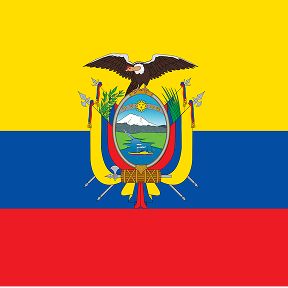Country overview
Ecuador is a land of extraordinary ecological diversity, uniquely positioned to grow both Arabica and Robusta beans. Straddling the equator, its territory spans the Andes highlands, the Pacific coast, and the Amazon basin, offering a vast array of microclimates. This geographic complexity allows for the cultivation of a wide range of flavor profiles, making Ecuador a powerhouse of potential in the specialty sector.
.png)
History of coffee production
Coffee was first commercially planted in Ecuador in the mid-19th century, with the industry gaining prominence after the local cocoa crisis in the 1930s. Ecuador was a major global exporter through the 1970s. However, the international price collapse of the 1980s and 90s, coupled with the national economy’s shift toward oil and petroleum, led to a significant decline.
A crucial turning point came in the early 2000s when many producers realised they couldn't compete on quantity and shifted their focus strictly to specialty quality. This focus, motivated by roasters willing to pay premium prices, initiated a slow but steady revitalisation of high-altitude Arabica production.
.png)
Particularities in the Coffee Market
The Ecuadorian coffee market is defined by a paradox of high quality and high cost, presenting unique challenges for direct sourcing:
- The cost barrier (Dollarisation): Unlike its neighbors, Ecuador's economy is dollarised, meaning labor, inputs, and operational costs are higher. This makes Ecuadorian specialty coffee inherently more expensive for traders and roasters, even without the reputation for quantity enjoyed by countries like Colombia.
- The import/export anomaly: Ecuador is the only producing country that imports more coffee than it exports. It imports cheap Robusta, primarily from Vietnam, to satisfy its high domestic demand for soluble (instant) coffee.
- Low productivity: Production is among the lowest in Latin America, with an average of just over two 60kg bags per hectare. This is largely due to aging plantations and a generational crisis, as younger farmers are migrating to cities, leaving labor-intensive work to older generations.
.png)
Quality and harvest
Ecuadorian specialty coffee is renowned for its complex and balanced flavour.
- Flavour profile: The best lots exhibit a delightful harmony of acidity and sweetness, often featuring floral aromas, juicy fruit notes (citrus, red apple), and a rich, chocolatey undertone.
- Main regions: The finest specialty lots are concentrated in the southern highlands, particularly the Loja, Zamora Chinchipe, and Pichincha provinces.
- Key varieties: Producers focus on high-value varieties, including the long-preserved Typica (often called Criollo), Bourbon, Caturra, and the increasingly famous local cross, Sidra.
- Harvest season: The main harvest season runs from April to September, with a smaller "fly crop" extending into the end of the year. This timing generally allows new crop coffees to be shipped from mid-November onwards, making them available in key markets between December and March.


%201%402x%20(6).png)
%201%402x%20(7).png)
%201%402x%20(8).png)
.png)

%201%402x%20(5).png)
